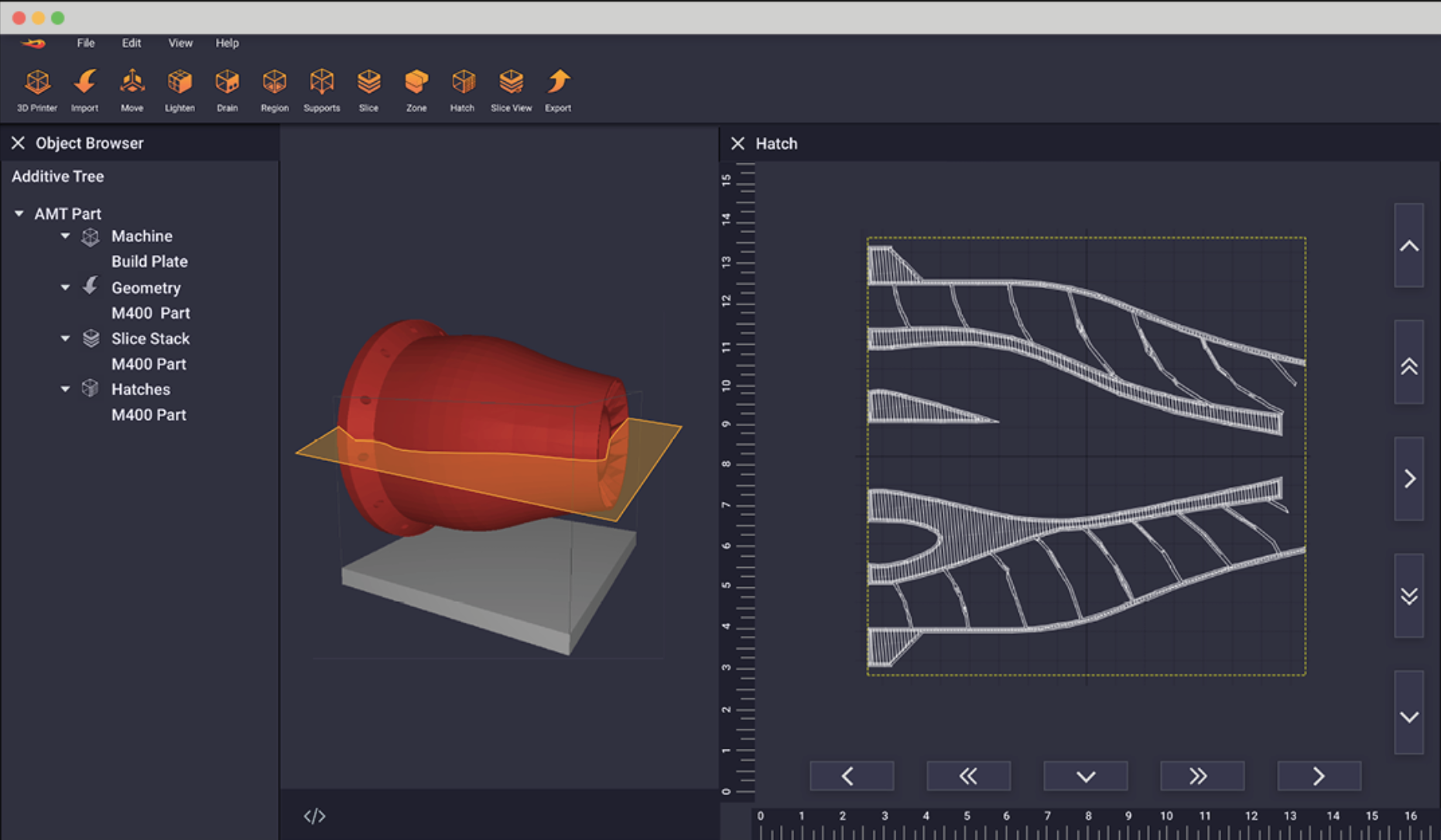HP and Dyndrite Partner to Create Next Generation 3D Printing Solutions
Seattle startup Dyndrite announced a strategic new partnership with Hewlett Packard (HP) to license Dyndrite’s geometric kernel technology and power the next generation cloud and edge-based digital manufacturing solutions. By combining HP’s end-to-end manufacturing management expertise with Dyndrite’s cutting edge additive technology, HP is hoping to deliver a software platform capable of powering the additive manufacturing (AM) factories of the future.
In 2019, 26-year old Harshil Goel’s company Dyndrite emerged out of stealth mode to reveal the world’s first GPU-native geometry engine, the Dyndrite Accelerated Geometry Kernel (AGK). Since geometry kernels were first introduced decades ago, they have been a crucial component in advancing 3D CAD/CAM/CAx software. Still, the company claimed this software have not kept pace with changing computational architectures, modern manufacturing technologies, and modern design needs. In order to address this challenge, Goel teamed up with veteran mathematicians, computer scientists, and mechanical engineers to develop a new solution that could level the playing field so that the manufacturing hardware no longer surpassed the software, facilitating the AM industry to reach its potential.
“The promise of 3D printing is to deliver unique parts and tools not possible through traditional methods, and do so on an industrial and global scale. For this to happen the industry must evolve and Dyndrite’s mission is to accelerate this change,” said Goel, now CEO of Dyndrite. “HP is a clear leader in industrial 3D printing and this collaboration speeds the game-changing impact our technology brings to the AM community at large. We applaud HP’s vision and look forward to a long and fruitful partnership for years to come.”
The new alliance builds on HP’s focus on expanding its software and data platform to help customers fully realize the transformative power of 3D printing technology. Through the development of new solutions that leverage the Dyndrite kernel, HP expects to improve efficiency, enhance performance and quality, enable mass-personalization, automate complex workflows, and create scalability and extensibility for continued partner and customer innovation. The ultimate goal for both companies is to change how the software works in the AM industries, driving new performance and functionality.
In that sense, Dyndrite claims that its fully native GPU Kernel easily handles additive specific computations such as lattice, support, and slice generation, in some cases reducing compute times from hours or days to minutes or seconds. For heavy use cases, the Dyndrite kernel is naturally scalable with access to additional GPU nodes, whether locally or in the cloud and provides both C++ and English-readable Python APIs, making application development accessible to a wide variety of users, including non-programmers such as students, mathematicians, and mechanical engineers. Probably what most interests HP is providing developers and original equipment manufacturer (OEM)s with a tool capable of representing all current geometry types, including higher-order geometries such as splines (NURBs), surface tessellations, volumetric data, tetrahedra, and voxels, allowing the development of next-generation applications and devices.
“Innovations in software, data intelligence, and workflow automation are key to unlocking the full potential of additive manufacturing,” said Ryan Palmer, Global Head of Software, Data and Automation of HP 3D Printing and Digital Manufacturing. “We are committed to advancing our digital manufacturing platform capabilities and this strategic collaboration with Dyndrite is an exciting next step on the journey.”
Building upon HP’s leading position as a behemoth technology firm, the company has acquired and partnered with dozens of companies to broaden its ecosystem and accelerate innovation and speed product development and supply chain efficiencies. HP also supports numerous 3D printing and digital manufacturing open standards to ensure data interoperability and choice for customers.
As a global provider of industrial-grade 3D printing and digital manufacturing solutions, HP offers systems, software, services, and materials science innovation to its customers. These solutions already include numerous software and data innovations, like its HP 3D Process Control and HP 3D Center software offerings.

Dyndrite’s new GPU-powered, python-scriptable, additive manufacturing build processor at work (Image courtesy of Dyndrite Corporation)
The new HP and Dyndrite partnership builds on a relationship that first began when HP became one of the inaugural members of the Dyndrite Developer Council, a group of leading 3D printing systems, software, and solutions providers. Along with Aconity3D, EOS, NVIDIA, Plural Additive Manufacturing, and Renishaw, HP was chartered with steering the future direction of the company’s roadmap. The driving force behind Goel’s venture is advancing the design and manufacturing software tools used today, which he said were built more than 30 years ago and are becoming bottlenecks to today’s creativity and productivity. Especially when compared to the manufacturing hardware that over the past few years has given rise to new design philosophies and a whole new paradigm of manufacturing production.
In this sense, Dyndrite is creating next-generation software for the design, manufacturing and additive marketplace, with the goal to dramatically increase the workflow and efficiency of AM technologies. With Dyndrite joining HP’s global ecosystem, HP advances 3D printing and digital manufacturing solutions, improving the overall experience for its customers and moving the industry forward.
The post HP and Dyndrite Partner to Create Next Generation 3D Printing Solutions appeared first on 3DPrint.com | The Voice of 3D Printing / Additive Manufacturing.
HP to adopt Dyndrite geometry kernel for its next generation 3D printing platform
3D Printing Webinar and Virtual Event Roundup, June 28, 2020
This week is packed full with 3D printing webinars and virtual events, with four taking place Tuesday, and two each on Wednesday and Thursday. We’ll tell you all about them below!
Digital Manufacturing Investor Day
First up, software provider Dyndrite will be hosting its first ever Digital Manufacturing Investor Day on Tuesday, June 30th, featuring both pre-recorded and live content. Investors and venture capital companies have been invited to hear lightning presentations by hardware and software startups from all around the world, and several industry investment firms will also give panel presentations. The advisors for the inaugural Digital Manufacturing Investor Day are Gradient Ventures, HP Tech Ventures, and The House Fund.
“This virtual event is an initiative to help link startups in the digital manufacturing space to investors in the industry. As supply chains have been recently disrupted and workforces have to remain distanced, so new digital manufacturing technology becomes even more critical as manufacturers figure out how to tackle these challenges.”
Register here.
Additive Manufacturing for Aircraft Interiors
Also on June 30th, a webinar about 3D printed aerospace applications will take place from 9-10 am EDT. “Additive Manufacturing for Aircraft Interiors – doing the trick for the In-Service Market” will discuss the use of polymer 3D printed parts for future aircraft cabins, how the technology can save money and time, possible new business opportunities for Maintenance Repair and Overhaul Providers (MROs), and what issues still remain, such as certification, investments, and availability of the right raw materials. Stephan Keil, Director Industrialisation for AM Global, will moderate the discussion between panelists Markus Glasser, Senior Vice President EMEA, EOS; Vinu Vijayan, Global Business Development Manager – Aerospace, EOS; Frederic Becel, Design Manager, CVE, Innovation Leader Aircraft Modification Division, Air France; and Karl Bock, Principal Design Engineer, Aircraft Modification Team, P21J Design Organisation, Lufthansa Technik.
“A wide spreading of AM manufacturing also has the potential to significantly change the supply chain setup of the Aero industry, impacting small and large suppliers, as distributed manufacturing moves closer to becoming a reality. Furthermore, new business models for spare parts and part design data may emerge, along with new services, which brings a need to tackle challenges around IP and regulation.”
Register here.
nScrypt’s Cutting Edge of Digital Manufacturing Webinar
nScrypt is also holding a webinar on the 30th, titled “Pushing the Envelope of Digital Manufacturing.” The first part of the Cutting Edge Digital Manufacturing webinar series will take place at 1 pm ET on the 30th, and the second part will occur at the same time on July 7th. Panelists Mark Mirotznik, PhD, University of Delaware; Jing Wang, PhD, University of South Florida and Oregon State University; Devin MacKenzie, PhD, University of Washington, and Raymond C. Rumpf, PhD, University of Texas at El Paso, will discuss the future of direct digital manufacturing, covering topics like metamaterial use, permeating electronics in structures for control, sensing, and smart features, and going from a CAD file to a final, multimaterial electronic product in one build.
“JOIN YET ANOTHER DISTINGUISHED PANEL for part ONE of an in-depth discussion on the future of direct digital manufacturing by some of the premiere additive manufacturing universities in the country. The projects these universities are working on are solving problems with traditional antennas and printed circuit boards (PCBs).
Register here.
ACCIONA’s Concrete 3D Printing Webinar
The last June 30th webinar will be held by ACCIONA, called “Let’s Talk Concrete 3D Printing.” It will take a multidisciplinary approach when discussing the technology’s use in the value chain, “where Innovation, Academia, Design, Manufacturing and Industry join together for a broad analysis of the technology.
Speakers will be Alaa K. Ashmawy, PhD, P.E. Dean and Professor for the School of Engineering at the American University in Dubai; Sualp Ozel, Senior Product Manager at Autodesk; Fahmi Al Shawwa, the CEO of Immensa Additive Manufacturing; Carlos Egea, Manager 3D Printing, Skill Center at ACCIONA; and Luis Clemente, COO 3D Printing at ACCIONA. The webinar will take place at 8:30 am EST, and attendees can join here.
3D Systems Webinar Featuring VAULT
On Wednesday, July 1st, at 10:30 am EST, 3D Systems will be holding a live webinar, “Advanced Your Engineering and Equip Sales to Win Business with SLA,” featuring VAULT, which manufactures enclosures for tablets in the point-of-sale industry. The company integrated 3D Systems’ SLA technology into its process, and the 45-minute webinar will explain how SLA can be used at every stage of business. VAULT will share customer reactions to quality and service, in addition to the training and on-boarding process, and explain how companies can win new business by providing access to high-quality 3D printed parts.
“Gaining a new client is all about gaining their confidence. No matter how refined your sales pitch, nothing wins trust or business faster than immediately following through on your promises.
“Join our live web event featuring VAULT’s VP of Engineering, Quentin Forbes, to find out how in-house 3D printing with 3D Systems’ stereolithography is helping the company build its reputation and client base.”
Register here.
Webinar for New Metal 3D Printing Material
Also on July 1st, metallurgist expert Aubert & Duval will join Alloyed, formerly known as OxMet Technologies, in hosting a free webinar about ABD-900AM, a new nickel superalloy for metal additive manufacturing. When tested with laser powder bed fusion (LPBF) technology, the high-strength material offered improved manufacturability, as well as high creep and oxidation resistance, compared to common AM alloys. It also features ~99.9% density and is highly crack resistant. Adeline Riou, Global Sales Manager at Aubert & Duval, and Will Dick-Cleland, Additive Manufacturing Engineer at Alloyed, will give an overview of the material’s properties, along with several interesting case studies, during the 30-minute webinar.
“Designed for use at high temperatures up to 900°C / 1650°F, ABD®-900AM has been tailored for AM by Alloyed not just for high mechanical properties, but also for excellent printability. Compared with Ni718, ABD®‑900AM provides a minimum of 30% improvement in yield stress at temperatures >800°C and a creep temperature capability improvement by up to 150 o C – similar to alloy 939 and alloy 738.”
The webinar will begin at 11 am EST, and you can register here.
Stratasys Aerospace Webinar Series Continued
Stratasys will continue its new aerospace webinar series this Thursday, July 2nd, with “Value Proposition of AM to Airlines.” During this hour-long webinar, Chuan Ching Tan, General Manager, Additive Flight Solutions (AFS), will speak about several related topics, including when and where additive manufacturing can make its business case to airlines, use cases – especially regarding aircraft interiors – by AFS to airlines, and other issues to get past in order to speed adoption of the technology.
You’ll have to wake up early if you’re in my time zone – the webinar will take place at 4 am EDT. Register here.
VO Webinar: Coming of Age for Additive Manufacturing
Recently, Viaccess-Orca (VO), a global provider of advanced data solutions and digital content protection, joined the collaborative 3MF Consortium as a Founding Member. Now, it’s presenting a free 45-minute webinar with HP and Autodesk, also active members of the 3MF Consortium, about “Additive Manufacturing’s coming of age: the essential role of data security and standards.” The webinar, also held on July 2nd, will focus on the importance of data security and standards as the closed AM ecosystem moves to a more open future. Dr. Phil Reeves, Managing Director of Reeves Insight Ltd, will facilitate the discussion between speakers Scott White, Distinguished Technologist, 3D Software and Data, HP, Inc.; Martin Weismann, Principal Software Engineer for Autodesk; and Alain Nochimowski, Executive Vice President of Innovation at VO.
Learning objectives of the webinar will include why data standards are so important for the growth and deployment of the technology in the Industry 4.0 supply chain, how 3D CAD and AM hardware vendors can embrace both interoperability and data standards to benefit customers, what the 3D printing industry can learn about analytics, traceability, and data security from more mature industries, and the consortium’s newly released Secure Content specification. At the end, there will be a Question and Answer session, facilitated by Laura Griffiths, Deputy Group Editor at TCT. The webinar will take place at 10 am EST; register here.
Will you attend any of these events and webinars, or have news to share about future ones? Let us know! Discuss this and other 3D printing topics at 3DPrintBoard.com or share your thoughts in the comments below.
The post 3D Printing Webinar and Virtual Event Roundup, June 28, 2020 appeared first on 3DPrint.com | The Voice of 3D Printing / Additive Manufacturing.
80 additive manufacturing experts predict the 3D printing trends to watch in 2020
Interview with Fried Vancraen on 30 Years in 3D Printing
Being such a young industry, we have only a few giants. One of them is Friend Vancrean. The soft-spoken Fried started as a research scientist before starting Materialise over thirty years ago. Quiet, analytical, and wise Fried has guided Materialise through three decades of 3D printing development. Over that time, the Belgian firm has become a large 3D printing service that is also the de facto leader in 3D printing software. To disclose my biases, I should point out that I’ve worked for Fried, and I admire him. No one else in 3D printing has proven to be as gifted at identifying new business opportunities in 3D printing and avoiding perilous markets. With a long track record, Materialise has pioneered the production and software chain in hearing aids, dental guides, surgical guides, CMF implants, prototypes, car parts, aircraft parts, and functional prototypes. Magics is the default file preparation and planning tool for industrial 3D printing, while software such as 3Matic and Mimics let cutting edge researchers practice their craft. As one of the few publicly traded 3D printing companies, Materialise is closely watched. 3DPrint.com caught up with Fried at formnext to discuss the past three decades of 3D printing as well as the next ten years.
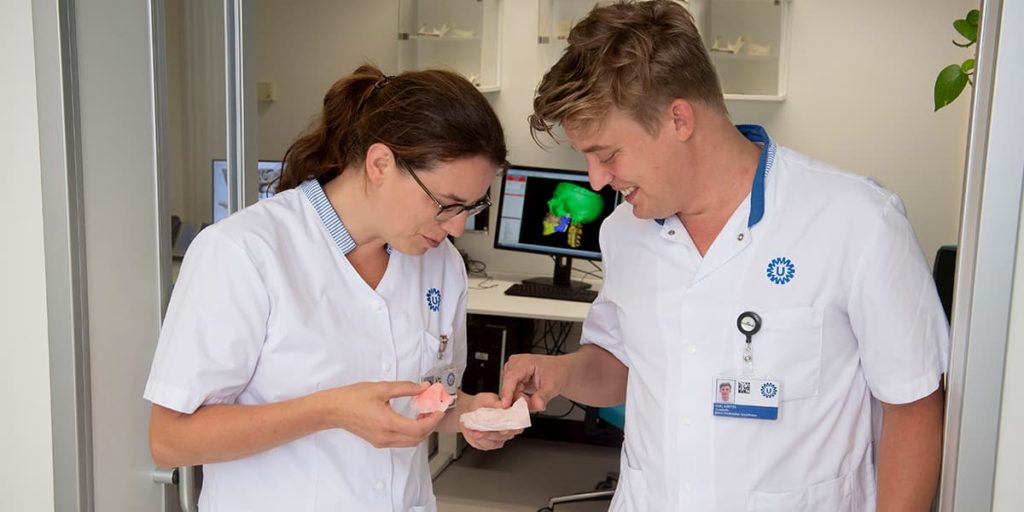
An in-hospital 3D printing lab at the University of Utrecht facilitated by Materialise
Fried says that he and the firm are proud of their financial results, and that “in all three segments..software, medical and manufacturing..the firm has shown growth” with “positive EBITA in all three segments.” Materialise must now “maintain growth and yield” while “3D printing value.” The main method that the firm has had in creating and maintaining value is to “invest in technology” and then to “develop technology that delivers enough value so that people will pay you for the service.” This seems rather simple, but the devil is in the details. “Materialise has proven to be able to deliver value for over thirty years.” In regards to BASF’s Sculpteo acquisition, he says that the firm was well informed ahead of time and “had decided to invest in certain materials and applications together with BASF,” “outside of these BASF wanted to do other market development on its own.”
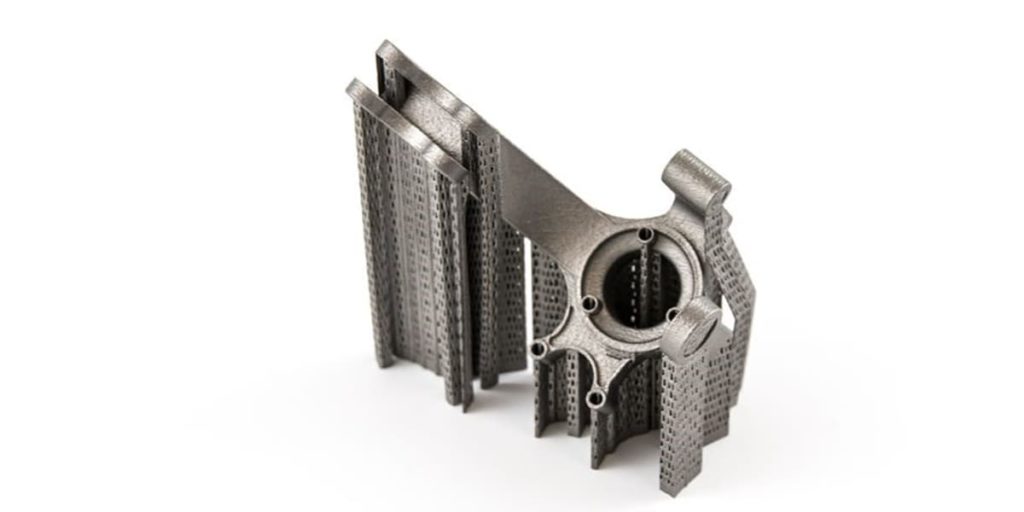
Materialise’s three segments all require different levels of investment and product development. The firm is “active in many vertical markets as well” in such diverse areas as “eyewear, polymer aircraft interiors, and medical software.” In all of these segments, a common thread is to “adhere to the right quality systems for the right application and vertical” production of a highly regulated aircraft part is very different from a similar part as a medical implant or prototype. Each vertical “has completely different tolerances, needs different environments, and entirely different product lines.” “A CMF implant part is very different and has a very different quality system than an orthopedic implant.” Choice across its broad portfolio is, therefore, a defining characteristic for Materialise. “We don’t just say everything; we don’t just do everything.”
Currently, Fried sees the market as “evolving” with manufacturing taking over from prototypes and concept models. New applications such as “motor and power train components” are now existing next to a “concept and prototypes.” In some sense, many of Materialise’s technologies are complementary, but in others, new methods will have to be discovered. Materialise must, therefore, in a “conscious and determined way make choices in manufacturing.”

A patient specific model can be used to plan or understand surgeries
In some sense, this is what the firm has always done. Fried divides up the last thirty years into three distinct segments “in the first ten years it was a question of proving that it works,” then the “second period was about scaling up,” and the third is “manufacturing.” In 3D printing’s first decade, “we had to prove that prototyping was a viable business,” and it became essential to see to it that “CAD systems and print systems were combined.” “Proven software,“had to be able to produce the parts that customers needed. In the second period, a “scale up” was required, “we had to go from prototyping to manufacturing” and had to “organize manufacturing” in a traceable and documented way. The third period “meant that the firm has to upscale manufacturing” and “cost down.” That period was all about “productivity and connectivity,” and “advanced software was needed to optimize processes and results.” Now we enter the fourth period in the history of 3D printing where “next-generation tools” become part and parcel of the “industrial future.” In keeping with this Materialise is introducing New Product Introduction tools stemming from its own NPI focussed efforts in 3D printing.
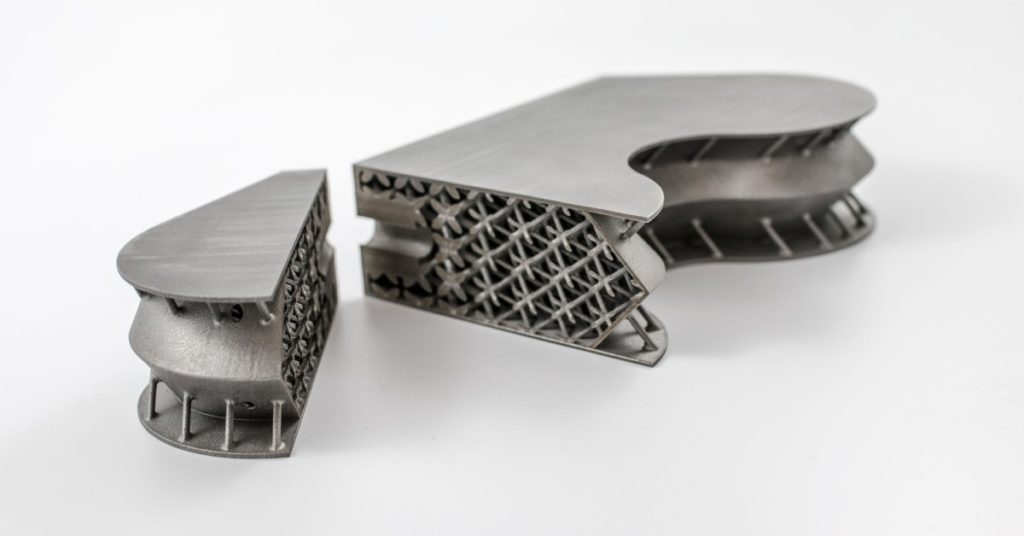
A cross section of a lightweighted space craft part made by Materialise
“Now, tools will help us go from prototyping all the way to a sustainable product.” With “NPI tools, we’re looking for process optimization” that let you develop a “fine-tuned product” that is “production-ready.” In a case with a customer, the firm has found that it can reduce some extremely long product introductions from years down to a month. Fundamentally he believes that “new tools and new inventions are required.” He sees that “many of today’s OEMs in the market are simply cheaper copies of existing technology.” So far, he contends that “if you want to manufacture, people will stay with EOS.” It is rare to see things like “HP’s MJF that brings some parts into a new cost category.” When asked, he says that he “believes in clustered manufacturing” through smaller desktop 3D printers for certain parts, “but only once those printers have improved significantly” in their build quality. “Consistent data is required..from consistent machines to get..consistent parts.” Once “know-how and competency” leads to “consistent printers..that work in quality systems,” we will see genuinely new developments.
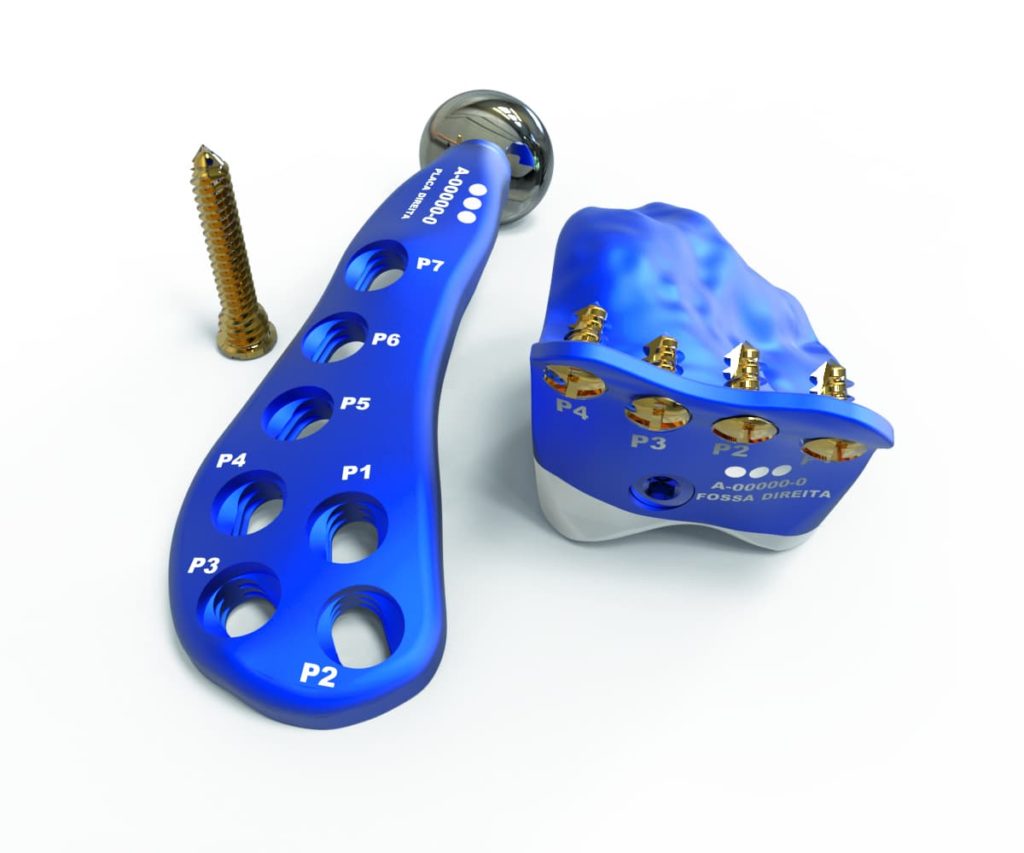
The firm is now an orthopedic implant manufacturer.
If we look at the next ten years in 3D printing, Fried hopes that “Materialise will continue to create value while delivering” on the “next generation of tools” that focus on “bringing costs down and analysis.” At the same time, hopes that Materialise can continue to “strive for a better and healthier world” while remaining a “3D printing sector thought leader.” In the beginning, the company had no idea how to ” “in a systematic way have a positive impact.” Now with the United Nations 17 Sustainable Development Goals, there is a “global compact, in fact. a quality framework, a framework for a better world.” Helping the firm conduct itself according to this framework. “Every year, he hopes that Materialise is better not only as a business but also how to make products for a better world.” One of the ways the company is tackling this is “to create high value recycled products from waste products“, something it will showcase at the Materialise Summit in May.
The post Interview with Fried Vancraen on 30 Years in 3D Printing appeared first on 3DPrint.com | The Voice of 3D Printing / Additive Manufacturing.

